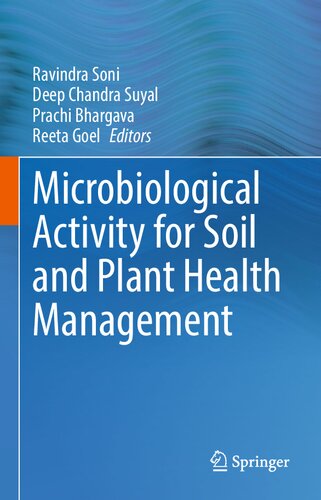

Most ebook files are in PDF format, so you can easily read them using various software such as Foxit Reader or directly on the Google Chrome browser.
Some ebook files are released by publishers in other formats such as .awz, .mobi, .epub, .fb2, etc. You may need to install specific software to read these formats on mobile/PC, such as Calibre.
Please read the tutorial at this link: https://ebookbell.com/faq
We offer FREE conversion to the popular formats you request; however, this may take some time. Therefore, right after payment, please email us, and we will try to provide the service as quickly as possible.
For some exceptional file formats or broken links (if any), please refrain from opening any disputes. Instead, email us first, and we will try to assist within a maximum of 6 hours.
EbookBell Team

4.4
92 reviewsPlants and the soil they grow in, are confronted with severe biotic and abiotic stresses viz. nutrient starvation, salt stress, drought, flooding, xenobiotic contamination, in order to sustain in an ecosystem. They also shape the microbial composition in their vicinity by modulating their secretions. This book discusses the pressing demand for novel and potential microorganisms to support an environment-friendly and cost-effective way of stress management in the plants. The book summarizes the processes and mechanisms involved in microbe-assisted plant and soil stress management. It discusses the challenges and opportunities in the application of microbial interactions in plant health. It describes in detail the nutrient dynamics of different soil systems. It includes important topics like agriculturally important genes and enzymes, rhizosphere modeling & engineering, genetically engineered bio-inoculants etc. It also talks about the application of next-generation technologies, omics and nano-based technologies. In the recent years, more than 50% of agricultural production relies on chemical fertilizers, leading to serious health issues and environmental concerns. This book provides natural solutions to these environmental concerns.
This book is useful for researchers and students in the field of microbiology, agriculture, soil biology and plant sciences.